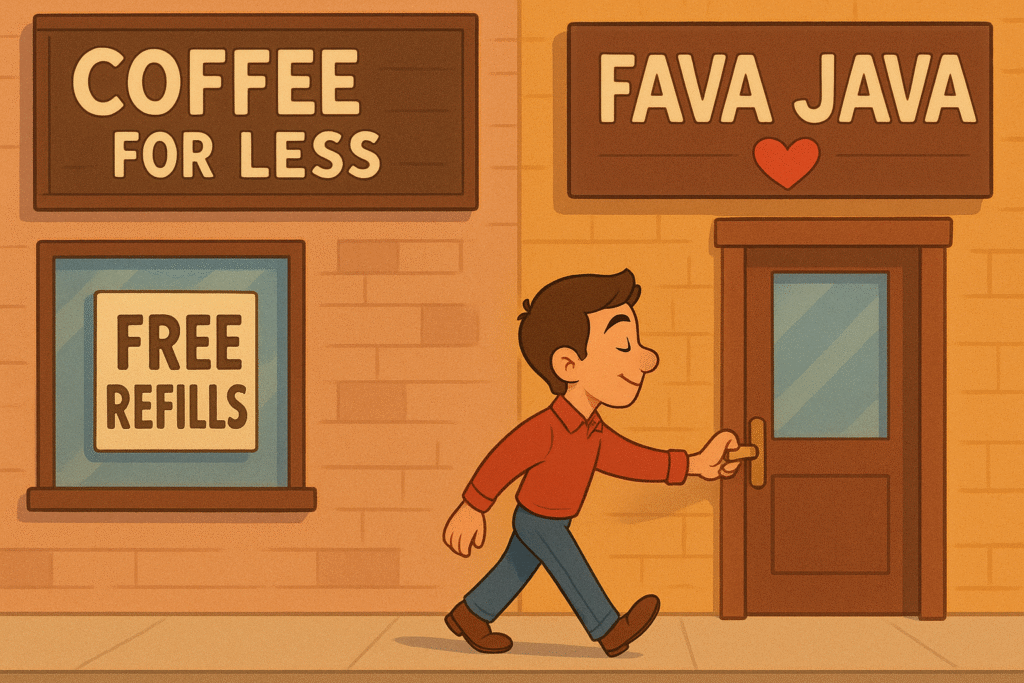
I know it seems kinda similar, but it’s not.
There’s a world of difference between your customer’s “preferred” choice and their true “favorite.”
That gap determines whether you compete tooth and nail on price — or command premium margins.
Preferred products can win comparison charts.
They may check the most boxes, offer competitive features, and earn mostly positive reviews.
Customers choose them through rational evaluation — weighing options, reading specifications, calculating VALUE.
But favorite products occupy emotional real estate that logic can’t even touch.
When someone calls it “my bank” instead of “a bank,” or “my coffee shop” instead of “a coffee shop,” you’re seing the psychological shift from preferred to favorite.
That possessive pronoun signals emotional ownership that transforms the entire customer relationship.
Preferred customers still shop around.
They’re always open to better deals, newer features, more convenient alternatives. Their loyalty extends exactly as far as their last comparison shopping session.
Favorite customers defend their choice even when objective alternatives exist. They’ll drive past ten closer coffee shops to reach “their” place.
They’ll dive all the way across the city to get the baguette they love most.
They’ll pay premium prices for products they could get cheaper versions of elsewhere.
They’ll recommend their favorite with evangelical enthusiasm, often taking personal offense when others don’t share their devotion.
The revenue implications are huge too.
Preferred brands compete in commoditized markets where price and features drive decisions.
Favorite brands carve out their own market category where emotional attachment justifies premium pricing.
In I Need That, I explore how this emotional connection — what I call the Fave Effect — creates sustainable competitive advantages that pure functionality never can.
Companies that become favorites don’t just serve customers; they become part of their customers’ identity and story.
Product Payoff: For 75 years In-N-Out has maintained premium burger pricing and cult-like devotion, despite countless competitors offering more convenience, wider menus, and aggressive pricing. Their secret isn’t superior burgers (though fans will disagree) — it’s becoming customers’ Fave through consistent quality, distinctive culture, and emotional connection.
When Shake Shack expanded west, many predicted In-N-Out would lose market share. Instead, In-N-Out customers saw it as an opportunity to publicly declare their loyalty, with social media filled with “In-N-Out forever” posts. Favorite brands go beyond surviving competitive attacks, to emerge stronger through the contrast.
Action for today: Discover whether your best customers view your product as preferred or favorite. Use a simple Google Form to survey recent ones about their language patterns — do they refer to your offering with possessive pronouns? Do they proactively recommend you without prompting?
Most importantly, ask if they would feel personally at a loss if you disappeared tomorrow, or would they quickly switch to the next-best alternative? The answers reveal whether you’re competing in a commodity market or creating emotional ownership that commands premium value.
What is your very favorite product of all — and why is that?
Or reach out to my team of product marketing agency gurus at Graphos Product.
Tap that reply arrow and share what creates genuine favoritism rather than mere satisfaction in your experience.
